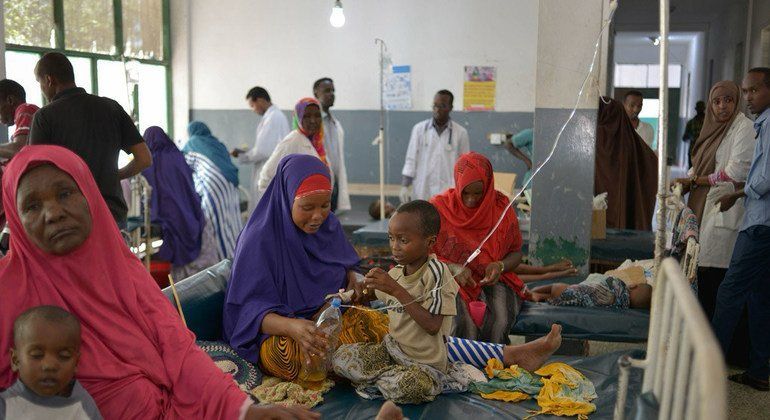Cholera Ravages Flood affected areas in Somalia in the Aftermath of El Nino
Cholera Ravages Flood affected areas in Somalia in the Aftermath of El Nino
The aftermath of the devastating El Nino floods in Somalia has brought about a catastrophic cholera outbreak, wreaking havoc on the flood-affected areas. The combination of limited access to clean water and proper sanitation has created a breeding ground for the disease, leading to a rapid spread of cholera. The consequences have been dire, with the World Health Organization (WHO) reporting alarming statistics and calling for urgent action to address the crisis.

The floods triggered by the El Nino phenomenon have caused widespread devastation in Somalia. As the floodwaters receded, they left behind a grim legacy—a surge in cholera cases. Displaced individuals, already vulnerable due to the floods, now face the additional threat of cholera due to the lack of access to safe water and proper sanitation. This perfect storm has led to a rapid escalation of the outbreak, leaving communities in desperate need of assistance.
The WHO’s report reveals the extent of the cholera outbreak in the flood-affected areas. During week 2, 474 new suspected cases were reported in 27 districts, resulting in nine deaths. Children under five years old accounted for 67.8% of the cases, highlighting their vulnerability to the disease. Moreover, 47% of the cases were female, further emphasizing the impact on women. The overall case fatality rate of 1.2% exceeds the emergency threshold of 1%, indicating the severity of the outbreak.
The cumulative attack rate of 18 cases per 100,000 people illustrates the widespread nature of the outbreak. Beletweyne and Bulo Burte, among the worst affected districts, reported incidence rates of 129 and 48 cases per 100,000 individuals, respectively. The confirmation of Vibrio Cholerae 0139 Ogawa in stool samples collected from the flood-affected regions solidifies the diagnosis and underscores the urgency to contain the spread of the disease.
Recognizing the gravity of the situation, the WHO and its partners have intensified their efforts to respond to the cholera outbreak. However, additional operational funds are urgently required to scale up response activities effectively. The WHO report emphasizes the need for immediate financial support to mitigate the impact of the outbreak and prevent further loss of life.
The human toll of the cholera outbreak is devastating. In week 2 alone, 67.8% of the new cases were children under five, highlighting the vulnerability of the young to this waterborne disease. The disproportionate impact on women, with 47% of the cases being female, further underscores the urgency to address the outbreak. Tragically, nine deaths were reported during this period, further emphasizing the need for urgent action to save lives.

Addressing the root causes of the outbreak, such as improving access to clean water and sanitation facilities and strengthening healthcare infrastructure, is crucial for long-term prevention. By investing in comprehensive and sustainable measures, we can not only contain the current outbreak but also build resilience against future cholera outbreaks in vulnerable regions.
The international community must rally together to provide the necessary support and resources to save lives and alleviate the suffering of the affected population in Somalia. By taking immediate action, we can bring an end to the cholera outbreak, ensuring a healthier and more secure future for all.
